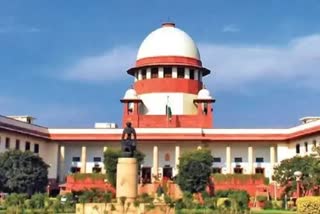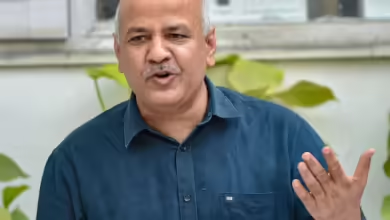Viewpoint | Persistence and Transition in India’s Foreign Policy: Interpreting a Decade of Prime Minister Modi’s Diplomacy
Like all nations, India’s foreign policy is shaped by a number of constant elements, such as its size, resources, geographic position, and surrounding areas. Other elements include its historical background, awareness of the national interest, demographic makeup, ability to defend itself, leadership caliber, self-perception, and presence of internal lobbying groups.

A pleasant neighborhood, economic growth, peace, security, and prosperity for everyone are examples of national interests in a wide sense. However, this depends on more than just national will. Since the globe is becoming more interconnected, conflicts between the interests of different nations might occur. As a result, instability in one place may have a greater effect than another. An entire nation may get embroiled in a fight even when it wants to keep the peace. A strong neighbor may pose a danger to its security. Thus, there are several elements involved in defining national interests.
India, one of the largest and most ancient civilizations on Earth, views itself as a nation incapable of subjugating others and deserving of a sovereign role in global events.
After escaping colonial tyranny, it was unable to unite with the West and cede control of its foreign policy. During the Cold War, it made the decision to remain non-aligned. India’s commitment to strategic autonomy, friendliness with everyone, and striking a balance in its external connections to maximize its freedom of choice are the cornerstones of the country’s current foreign policy.
Since the global environment is dynamic, changes in it require modifying foreign policy.
Consider the fall of the Soviet Union, with which we were closely associated. It was our largest ally in both commerce and defense. It was crucial to our position in the 1971 war that resulted in Bangladesh’s establishment and in the UNSC debate over the Kashmir problem.
As a balancing act, we joined the RIC dialogue, which later developed into BRICS, during the US unilateralist era when we were under intense pressure from the US regarding human rights, Kashmir, our nuclear and missile programs, and other issues. At the same time, we started to strengthen our ties with the US in light of the new geopolitical realities.
We have persisted in keeping tight relations with Russia, holding yearly summits starting in 2000 and continuing until 2021. We have never faced sanctions from Russia. We have opposed the sanctions imposed by the West on Russia. In spite of the possibility of more US sanctions, we purchased the S400 air defense system. We have refrained from denouncing the military action that Russia has taken in Ukraine. Russia is now one of our main oil suppliers. During all of this, our relations with the US have grown stronger, and defense trade has increased with the US, France, and Israel while it has decreased with Russia.
Increasing economic development in a nation aids in the pursuit of a more engaged foreign policy. The instance of China is instructive. Along with bolstering its military might, its economic growth has given it the financial and economic clout to pursue a more aggressive foreign policy.
India’s economy is expanding as well, and when it hits $5 trillion and beyond, it will have more power to represent its interests internationally. India’s economy, which is now ranked fifth and is expected to rise to the third rank by 2030, is causing it to act more assertively on the global scene. Foreign powers are now more involved in India than they have ever been. According to the US president, the 21st century will be defined by the US’s relationship with India. President Putin lavishes praise on Modi and India, saying that Modi’s India upholds national interests and defies international pressure to the extent that it has even taken Putin by surprise.
The partition of India and the establishment of Pakistan, which has attempted to subvert India both internally and externally since its founding through terrorism, war, religious mobilization of the Islamic world against us, and the ongoing internationalization of the Kashmir dispute, have had a significant impact on India’s foreign policy. Regarding the Kashmir dispute, India has been on the defensive for decades, accepting, in particular, US and UK meddling on Pakistan’s side.
This defensiveness explains why, in spite of Pakistan’s persistent provocations, India has had talks with Pakistan and is prepared to tolerate the inclusion of Kashmir on the agenda for our composite dialogue—even in the wake of the horrendous Mumbai attacks and the assault on our Parliament.
In 2014, Nawaz Sharif was invited to Prime Minister Modi’s swearing-in ceremony, while in 2015, Modi paid an unexpected trip to Lahore. Former Prime Minister Vajpayee also visited the city.
This defensiveness has now been dropped with PM Modi. Following India’s surgical strikes in Uri and Pulwama’s attack in Balakot,. The J&K problem will no longer be discussed with Pakistan going forward due to the modification of Article 370.
With some success, India is concentrating on the terrorist problem in bilateral and international fora. Pakistan’s disarray and the growing power disparity between them have made it harder for Pakistan to get worldwide support for its disputes with India, even within the Islamic community. As a result, India has been able to lessen Pakistan’s importance in its regional ambitions.
India’s ties with the Arab world have changed in this respect. During the height of the nonaligned movement, India maintained tight links with secular, progressive, and anti-fundamentalist Arab countries like Egypt and Iraq, but had tense relations with the reactionary Gulf monarchs. Given that both Saudi Arabia and India want to modernize and deradicalize their cultures, the two nations have extremely tight connections today. They now have a greater financial stake in India. The NDA government started the process of strengthening connections, but the Modi administration has taken it to a whole new level. Apart from the FTA with the UAE, this significant shift is reflected in PM Modi’s opening of a Hindu temple in the United Arab Emirates.
India has always been a staunch ally of the Palestinian cause, but under Prime Minister Narasimha Rao, it was given the opportunity to establish diplomatic relations with Israel in 1992 as a result of the Madrid Peace Accord between Israel and the PLO. Under both the Vajpayee and Modi administrations, India’s relations with Israel were reinforced, but not at the expense of its relations with the Arab world. It has consistently backed a two-state solution in Palestine. It is noteworthy that the US, India, Israel, and the UAE established the I2U2 forum of collaboration as a result of the Abraham Accords. The Middle East-Europe-India Economic Corridor was supposed to be established, and Israel was supposed to be a partner. However, the present state of affairs in Gaza has complicated this plan. This was decided upon during the G20 summit.
The second significant event that has had a long-lasting impact on India’s foreign policy is China’s annexation of Tibet, as well as its claims to and control of Indian land, including its newly established contiguous status with India.
China has been accommodated by India for many years. In 1954, it acknowledged Tibet as a part of China. In 1962, India lost the boundary dispute. China claimed a huge portion of Indian land. India began negotiating peace with China in 1988. The Peace and Tranquility Agreements of 1993 and 1996 were signed during Narasimha Rao’s leadership. The SR mechanism was agreed upon in 2003 as a means of reaching a political resolution. Under Manmohan Singh, the Guiding Principles and Parameters for settling the border dispute were agreed in 2005. China received overtures under Modi. Modi traveled to China, and Xi to India. Two unofficial summits took place.
In the meantime, China undertook a number of provocative actions, including calling in South Tibet, renaming places in Arunachal Pradesh in Chinese, eroding the SR mechanism, asserting aggressive claims over the state of Arunachal Pradesh, and rejecting the 2005 agreement on Guiding Principles and Parameters to settle the boundary dispute.
Finally, China broke many border accords with the Philippines in 2020 with Galwan, and as a result, ties between the two nations have deteriorated severely. At Doklam, as well as in the regions of Sikkim and Tawang, India defied China. At the border, Indian and Chinese forces are now confronting one another. India is keeping the lines of communication open but does not anticipate an early de-escalation on the border. We have said unequivocally that regular ties with China are contingent upon normalcy at the border. Our diplomatic conversation with China is no longer defensive under PM Modi.
India is strengthening its deterrent against China by taking use of its relationships with the US and its allies. This strategy includes the Quad, the Malabar exercises, and the Indo-Pacific idea. India and the United States acknowledge that China’s unlawful claims to sovereignty and expansionism pose a mutual concern. In the western Indian Ocean, we are specifically working with France to keep an eye on China’s actions. In order to increase marine domain knowledge, India established an Information Fusion Center for the Indian Ocean area in December 2018. In general, India is giving international naval cooperation in the Indian Ocean more attention than it has previously given. Compared to before, when we objected to foreign fleets stationed in the Indian Ocean, this is a totally different situation.
India and the US have never had easy relations. Since 1974, India has been subjected to US sanctions. India’s strategic ascent was impeded despite the fact that it was a democracy and shared principles with the United States. When Reagan took office in 1982, Indira Gandhi made an effort to patch things up. 1994 saw PV Narasimha Rao go to the US under the Clinton administration. When Vajpayee visited the US in 2000 and again in 2002, during Bush’s presidency, he said that India and the US were natural friends. There, the policies remained consistent.
Under Vajpayee, India and the US started a strategic conversation in 2002. Under Manmohan Singh, the US and India reached a nuclear accord in 2006, removing a significant strategic barrier to the development of bilateral relations and laying the groundwork for future growth.
With many bilateral trips, including a very successful state visit in June 2023 during which he addressed the US Congress—becoming the first Indian leader to do so twice—India-US relations have reached a new height under PM Modi. The US has surpassed India as its largest trading partner, and defense connections have increased along with the signing of fundamental agreements and the acquisition of significant defense assets. The ICET mechanism has created the foundation for collaboration in important and developing technologies.
However, as part of its strategy to maintain its strategic autonomy while moving from non-alignment to multi-alignment, India is a member of both the SCO and the BRICS.
Neighbourhood First policies have been declared by all prior administrations; IK Gujral even bases it on non-reciprocity. Through many trips to Nepal and Sri Lanka as well as a change in our relations with Bangladesh, the Modi administration has taken this agenda considerably further. Unlike its predecessors, the Modi administration is also using religious affiliations with Nepal and Sri Lanka. Under the Solih administration, ties with the Maldives were improved; however, under the Muizzu administration, those ties have deteriorated.
China has significantly impacted our neighborhood, but India is rising to the occasion. India must come to terms with the fact that our neighbors will continue to test our red lines and use the China card against us.
India has always supported Afro-Asian unity. It backed African liberation groups and, from the Congress government’s tenure after our independence, adopted a moral stance against apartheid. India’s policy has been heavily focused on Africa. With its aid initiatives for Africa, the India-Africa summits throughout the UPA and BJP administrations, and the most recent move made by India under PM Modi to admit the African Union as a G20 member, this has persisted.
India now has a much more solid and self-assured foreign policy. More than ever, we are communicating our foreign policy ideas to a global audience and doing it with far less hesitation. India is now giving a lot of aid to developing nations in its neighborhood, especially in Africa, rather than only searching for help. Modi’s visits to nations that had not seen an Indian prime minister in years demonstrate the breadth of the countries that India is courting.
India’s prominence has increased to the point that, under PM Modi, it has held joint meetings with leaders of the Nordic, Central Asian, Pacific Island, and CARICOM countries, among others. In addition, leaders of all ASEAN countries were invited guests to India’s R-Day celebrations in 2018.
India has changed views of the country from a doubter to a reliable player in the climate change discussions by maintaining its position on important matters of national interest and by acting as a constructive negotiator. Under Modi, India is fulfilling its obligations under the Paris Agreement, has established the Coalition for a Disaster Resilient Infrastructure, organized the International Solar Alliance, set a goal of 500 GW of renewable energy capacity by 2030, etc.
India is presenting itself as the “leader” of the Global South, which is a significant departure from its previous approach as well as a continuation of its long-standing strategy. India has the chance to further its leadership position by hosting the Voice of the Global South meeting in January 2023 thanks to its G20 chairmanship. With regard to food, fertilizer, and energy issues, multilateralism reform, the operation of Multilateral Development Banks, debt relief, accelerating the achievement of the Sustainable Development Goals, financial and technological transfers to developing nations to address climate change issues, etc., India was successful in bringing the perspectives and priorities of the Global South to the G20 agenda. The G7 is no longer the focus of the G20 agenda.
India presents itself as a major force in civilization. It has inserted its own concepts into global discourse. Aside from that, on June 21, the UN will declare International Yoga Day. These include the Global Initiative for Public Health, One Future Alliance, and Vasudhaiva Kutumbakam, which expand on the organization’s successful Vaccine Maitri diplomacy in poor nations. A human-centric approach to technology, LiFE, the global food supply chain, global digital public infrastructure, etc. are some more concepts.
The vigor with which the Modi administration is addressing the Indian diaspora is one significant shift. With his inspiring speeches, Modi has energized the Indian diaspora and instilled in them a feeling of pride in the nation, highlighting its numerous accomplishments in an elegant manner.
Lastly, the leader’s personality counts. Building personal relationships with foreign leaders is one of Modi’s strong suits when it comes to furthering our foreign policy objectives.







